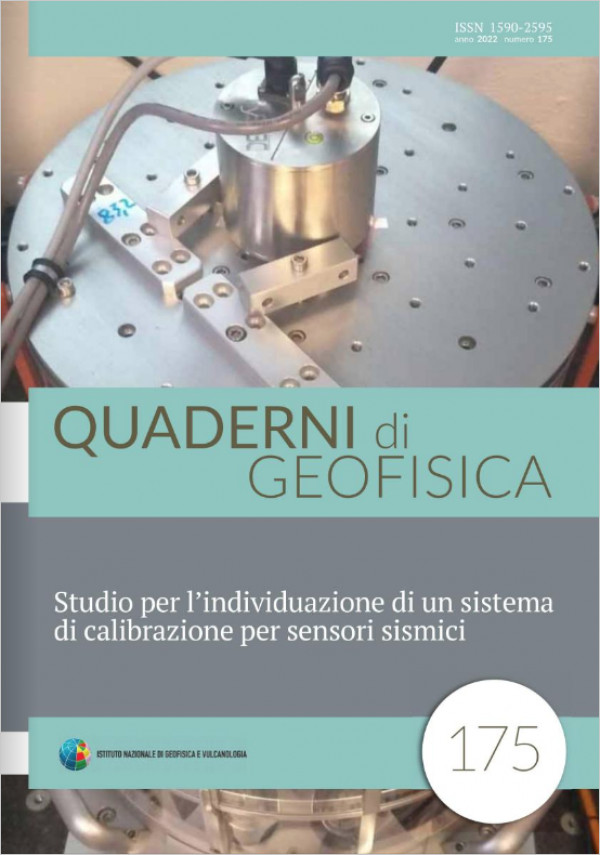Studio per l’individuazione di un sistema di calibrazione per sensori sismici
Main Article Content
Abstract
This work sets out to identify a state-of-the-art system to be used for the calibration of seismic sensors. The aim is to acquire such a system within the framework of the PON ARS01 00926 EWAS (an Early Warning System for cultural heritage) project, which seeks to develop new technologies for the protection, conservation and safety of cultural heritage and envisages creating a newly developed seismic monitoring system. This system will exploit the ETL3D/5s-H hybrid sensors, resulting from the integration of a precision accelerometer within the ETL3D/5s velocimeter [Fertitta et al., 2020]. The new calibration system, already acquired and being installed, can be used by the EWAS project partners (including the National Institute of Geophysics and Volcanology and the Kore University of Enna), to calibrate the ETL3D/5s-H sensors, and by external organisations to calibrate or gauge other seismic sensors, thus providing a useful service to the scientific community and supporting industrial activities. This paper presents the method used and the activities undertaken to define the technical specifications of the calibration system. A feasibility study of an electromechanical vibrating table and the testing of two electrodynamic calibration systems were carried out. One of the electrodynamic systems is the CS18P (Calibration System for Seismic Sensors) produced by the German firm SPEKTRA. The CS18P comprises two vibrating tables, one horizontal and one vertical, which, thanks to their fluid-dynamic suspension, eliminate the sliding and rolling friction associated with the movement of the moving part with respect to the fixed part. A hardware and software system monitors and controls the motion in real time, analyses the data and automatically processes a predefined set of measurements. In the light of the technical specifications and experimental results, the CS18P represents the ideal solution for the aims of the EWAS project and also in view of the possible future uses of the calibration system.
Article Details
Issue
Section
Article

This work is licensed under a Creative Commons Attribution 4.0 International License.

